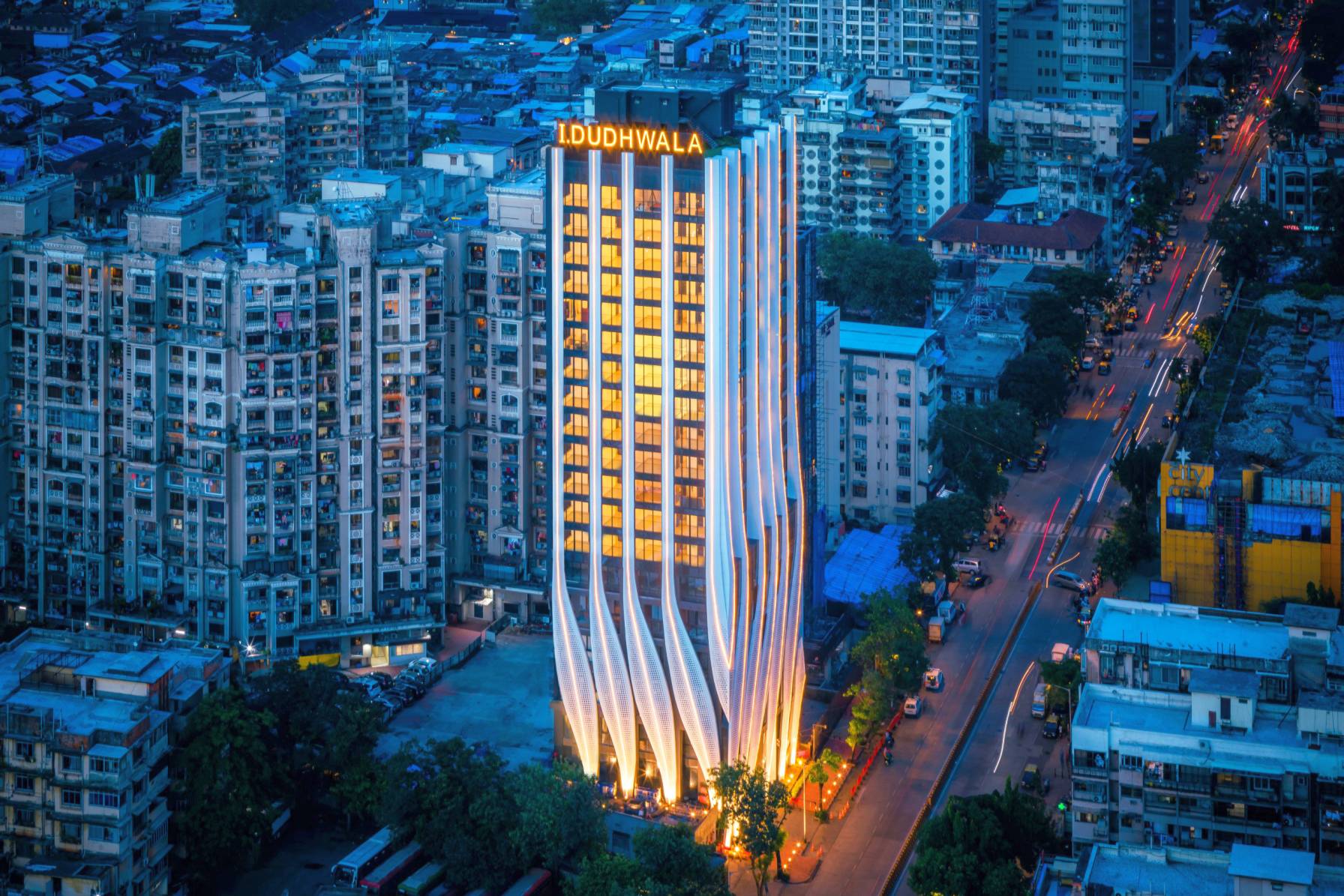
ID Origins by Studio Symbiosis
ID origins is a mixed-used revitalization project, designed using undulating calligraphic strokes which seamlessly integrate the old and new. The significance of the project arises both from its location in the city of Mumbai and also from the sentimental value the building holds for the owners.
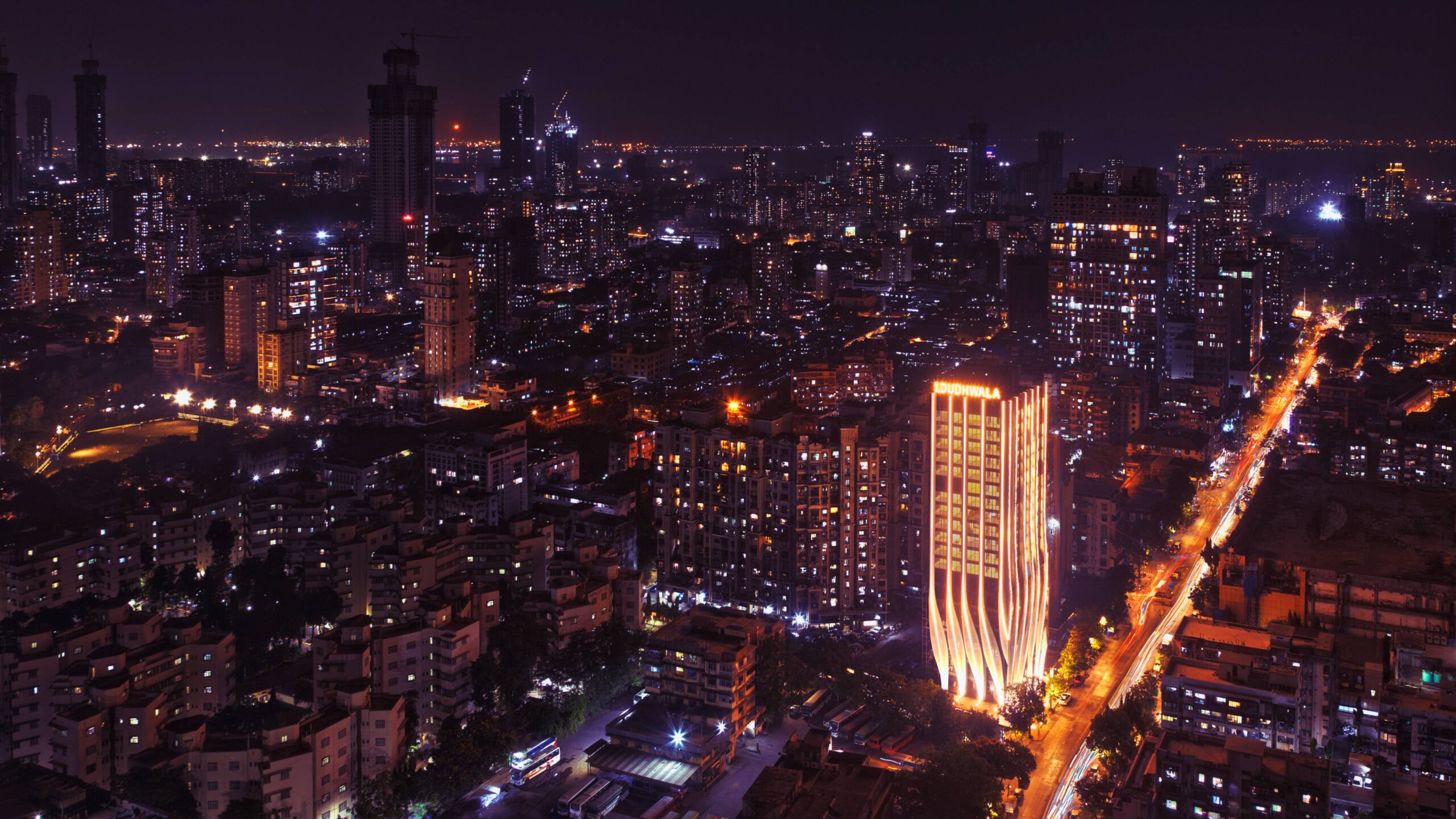
The original structure was built in the 1980s and is the pivotal focus of where the owners started their business, hence the name ID origins. Twelve additional residential floors are erected above the existing six commercial floors, with a transfer girder between these two strata acting as a load transfer as well as additional columns that have been designed starting from the ground up.
Given the dichotomy of the requirements of these distinct activities in the building, the design look’s at creating perforated screens on the commercial floors to reduce solar glare and provide optimum lux level. These calligraphic strokes gradually wane as they reach the residential floors, thereby maximising the panoramic views for the residential apartments.
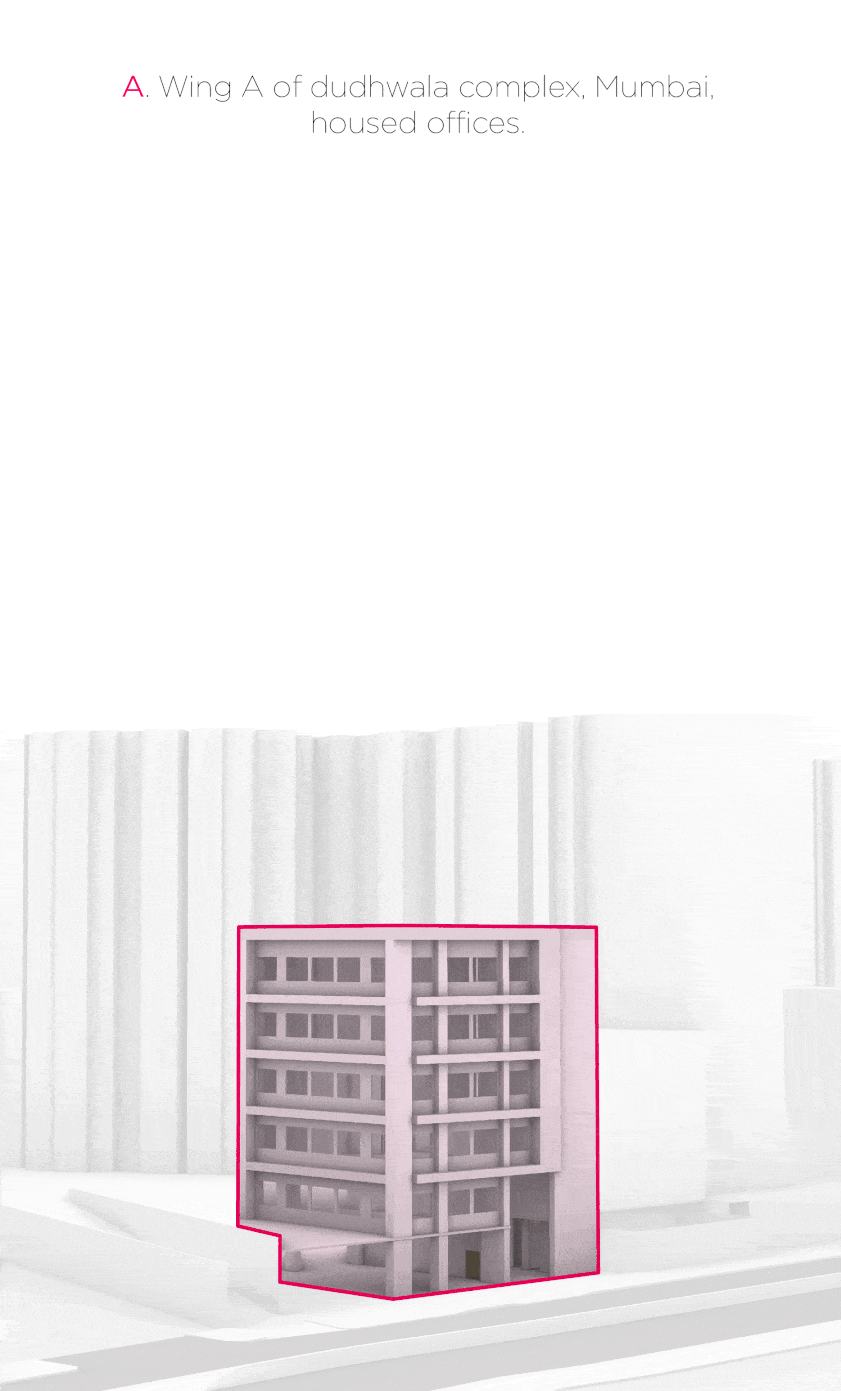
The new façade of the project creates a locus for the site and acts as a visual marker for the entrance to the overall site, which spreads over 12 acres of land. In the dense urban fabric of Mumbai, the project will be visible from pedestrian as well as vehicular routes, making the site experience more coherent.
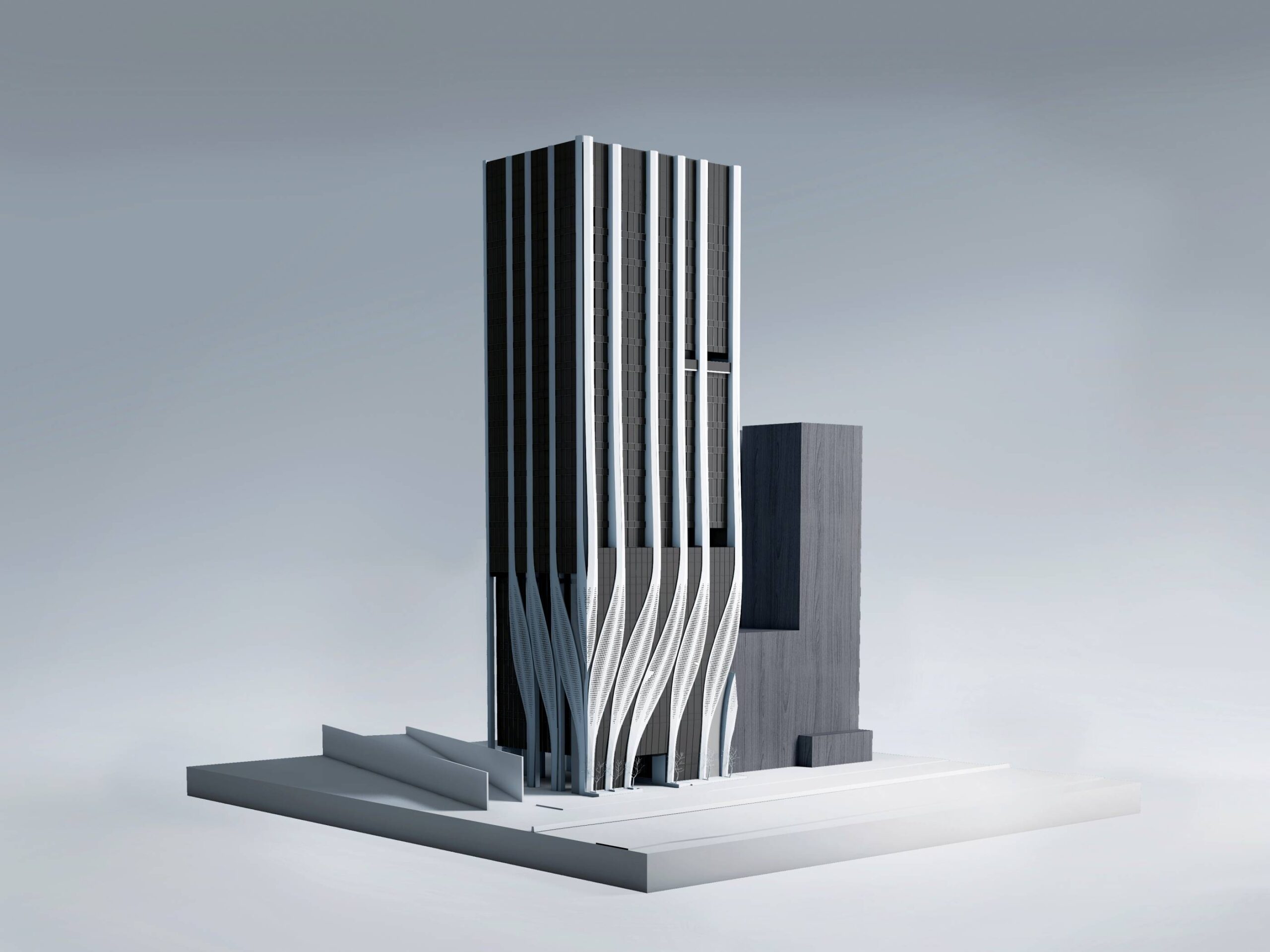
This Urban rehabilitation of the site extends into the urban fabric by the means of, rerouting the entrances and exits to decongest the entrance road, uplifting the pedestrian walkways in the vicinity of the site, dissolving the site boundary and creating an urban lobby which becomes a part of the Mumbai streetscape.
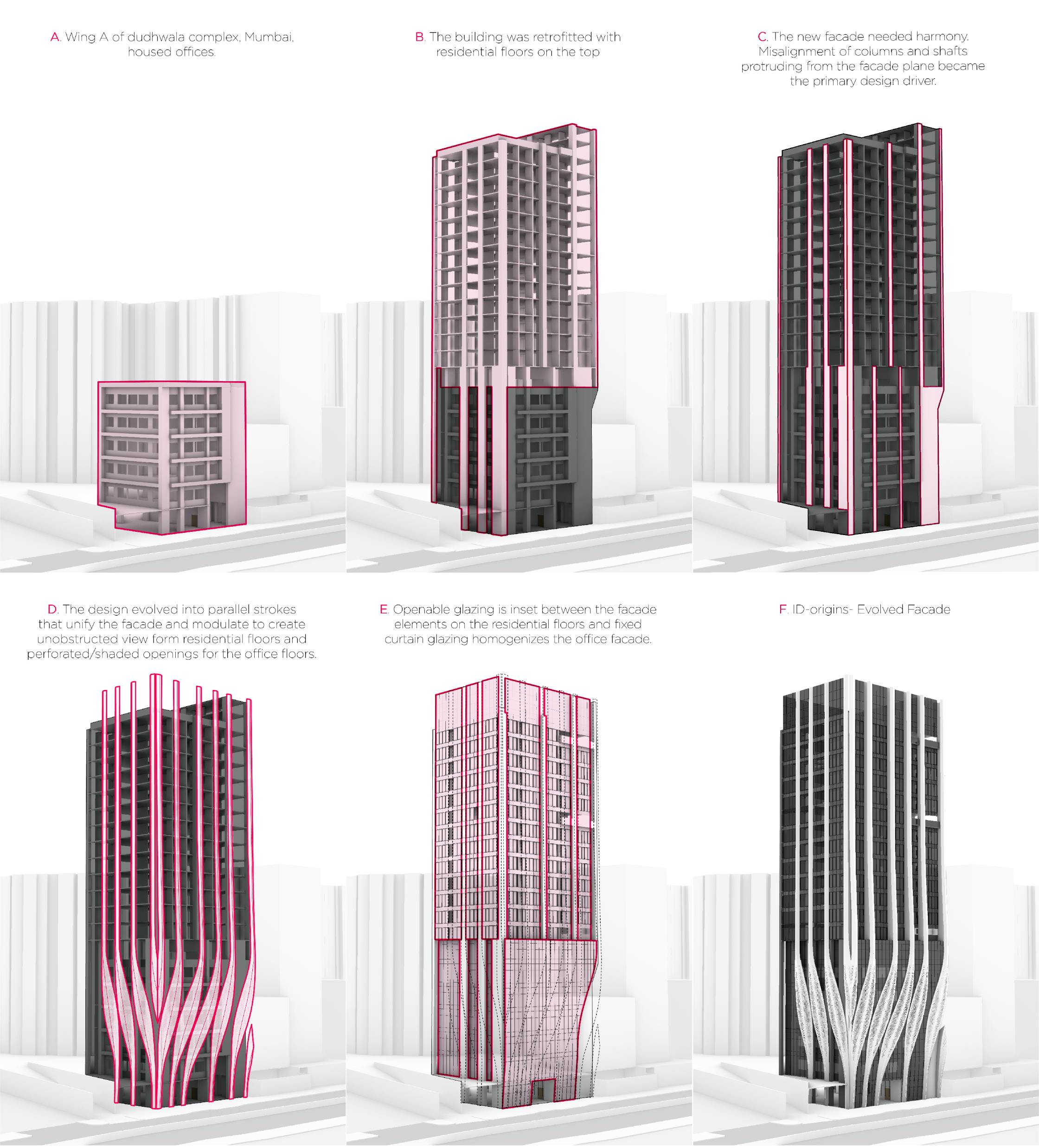
Given the undulating nature of the façade, it was important to rationalize it into panels that are easy to construct for construction. The geometry of the calligraphic moves is planar in nature, with a V profile in the plan. This was done to ensure that we have multiple options of materials and techniques to execute the design. Given the loading requirements on the old existing structure, this execution flexibility inbuilt into the design was helpful. Mock-ups were done on-site for GRC, FRP, ACP, and finally, CNC-routed ACP panels were selected due to their lightweight and fire-rated properties. The time of execution was reduced by 6 months as no moulds were required. Thus, the overall cost of construction was also reduced.





Videos:
Project Facts:
Site Area | Built-Up Area: 1.5 Acre | 18,750 Sqm
Client: I.Dudhwala Group
Status: Completed
Program: Office, Residential, Lobby
Scope: Facade | Landscape
Design: Amit Gupta, Britta Knobel Gupta
Project Lead: Dewesh Agrawal
Team: Anjan Mondal, Jitrendra Farkade
Concept Design: Kartik Misra, Chinmay Chowdhary, Anjan Mondal, Mandeep Chaudhary, Aditya Sharma










